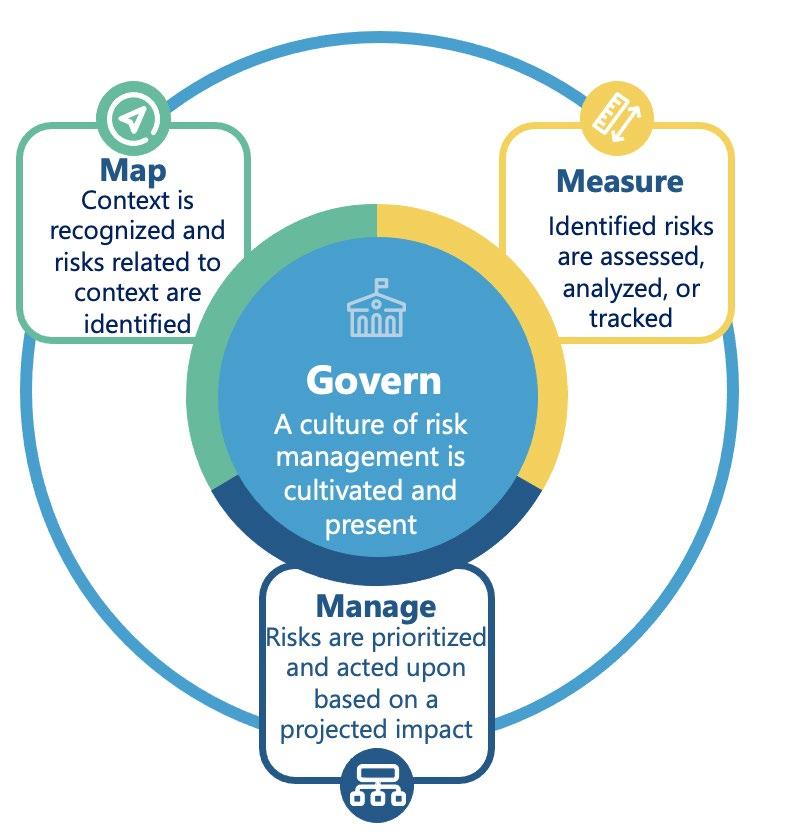
2 minute read
1.2. Purpose of the AI RMF
is used, its interactions with other AI systems, who operates it, and the social context into which it is deployed.
Responsible use and practice of AI systems is a counterpart to AI system trustworthiness. AI systems are not inherently bad or risky, and it is often the contextual environment that determines whether or not negative impact will occur. The AI Risk Management Framework (AI RMF) can help organizations enhance their understanding of how the contexts in which the AI systems they build and deploy may interact with and affect individuals, groups, and communities. Responsible AI use and practice can: » assist AI designers, developers, deployers, evaluators, and users to think more critically about context and potential or unexpected negative and positive impacts; » be leveraged to design, develop, evaluate, and use AI systems with impact in mind; and » prevent, preempt, detect, mitigate, and manage AI risks.
Advertisement
Cultivating trust by understanding and managing the risks of AI systems will help preserve civil liberties and rights, and enhance safety while creating opportunities for innovation and realizing the full potential of this technology. The AI RMF is intended to address challenges unique to AI systems and encourage and equip different AI stakeholders to manage AI risks proactively and purposefully. The Framework describes a process for managing AI risks across a wide spectrum of types, applications, and maturity – regardless of sector, size, or level of familiarity with a specific type of technology. Rather than repeat information in other guidance, the AI RMF aims to fill gaps specific to AI risks. Users of the AI RMF are encouraged to address non-AI specific issues via currently available guidance. The AI RMF is a voluntary framework seeking to provide a flexible, structured, and measurable process to address AI risks prospectively and continuously throughout the AI lifecycle. It is intended to help organizations manage both enterprise and societal risks related to the design, development, deployment, evaluation, and use of AI systems through improved understanding, detection, and preemption. Using the AI RMF can assist organizations, industries, and society to understand and determine their acceptable levels of risk. The AI RMF is not a checklist and it is not intended to be used in isolation. Organizations may find it valuable to incorporate the AI RMF into broader considerations of enterprise risk management. The AI RMF is not a compliance mechanism. It is law- and regulation-agnostic, as AI policy discussions are live and evolving. While risk management practices should incorporate and align to applicable laws and regulations, this document is not intended to supersede existing regulations, laws, or other mandates. The research community may find the AI RMF to be useful in evaluating various aspects of trustworthy and responsible AI and related impacts.





